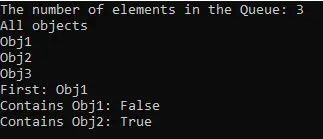Select,Insert,Update,Delete Data in Access File using C#
This example shows how to insert ,update, delete and select data in Access File(CRUD Operations).
- Firstly, you should install Microsoft Access Database Engine.
- Then, we can use System.Data API.
- The database in the sample file contains a table that has a name “TABLE1”.
TABLE1:
| ID | NAME | SURNAME |
| 1 | Jack | Sparrow |
Select Command Example:
string mdfFile = @"csharpexamples.mdb";
using (OleDbConnection connection = new OleDbConnection(string.Format("Provider=Microsoft.Jet.OLEDB.4.0;Data Source={0}", mdfFile)))
{
using (OleDbCommand selectCommand = new OleDbCommand("SELECT TOP 10 * FROM TABLE1", connection))
{
connection.Open();
DataTable table = new DataTable();
OleDbDataAdapter adapter = new OleDbDataAdapter();
adapter.SelectCommand = selectCommand;
adapter.Fill(table);
foreach (DataRow row in table.Rows)
{
object nameValue = row["NAME"];
object surnameValue = row["SURNAME"];
}
}
}
Insert Command Example:
string mdfFile = @"csharpexamples.mdb";
using (OleDbConnection connection = new OleDbConnection(string.Format("Provider=Microsoft.Jet.OLEDB.4.0;Data Source={0}", mdfFile)))
{
using (OleDbCommand insertCommand = new OleDbCommand("INSERT INTO TABLE1 ([NAME],[SURNAME]) VALUES (?,?)", connection))
{
connection.Open();
insertCommand.Parameters.AddWithValue("@NAME", "Brad");
insertCommand.Parameters.AddWithValue("@SURNAME", "Pitt");
insertCommand.ExecuteNonQuery();
}
}
Update Command Example:
string mdfFile = @"csharpexamples.mdb";
using (OleDbConnection connection = new OleDbConnection(string.Format("Provider=Microsoft.Jet.OLEDB.4.0;Data Source={0}", mdfFile)))
{
using (OleDbCommand updateCommand = new OleDbCommand("UPDATE TABLE1 SET [NAME] = ?, [SURNAME] = ? WHERE [ID] = ?", connection))
{
connection.Open();
updateCommand.Parameters.AddWithValue("@NAME", "Brad2");
updateCommand.Parameters.AddWithValue("@SURNAME", "Pitt2");
updateCommand.Parameters.AddWithValue("@ID", 2);
updateCommand.ExecuteNonQuery();
}
}
Delete Command Example:
string mdfFile = @"csharpexamples.mdb";
using (OleDbConnection connection = new OleDbConnection(string.Format("Provider=Microsoft.Jet.OLEDB.4.0;Data Source={0}", mdfFile)))
{
using (OleDbCommand deleteCommand = new OleDbCommand("DELETE FROM TABLE1 WHERE [ID] = ?", connection))
{
connection.Open();
deleteCommand.Parameters.AddWithValue("@ID", 2);
deleteCommand.ExecuteNonQuery();
}
}
See Also: Select,Insert,Update,Delete Data in MySQL using C#



